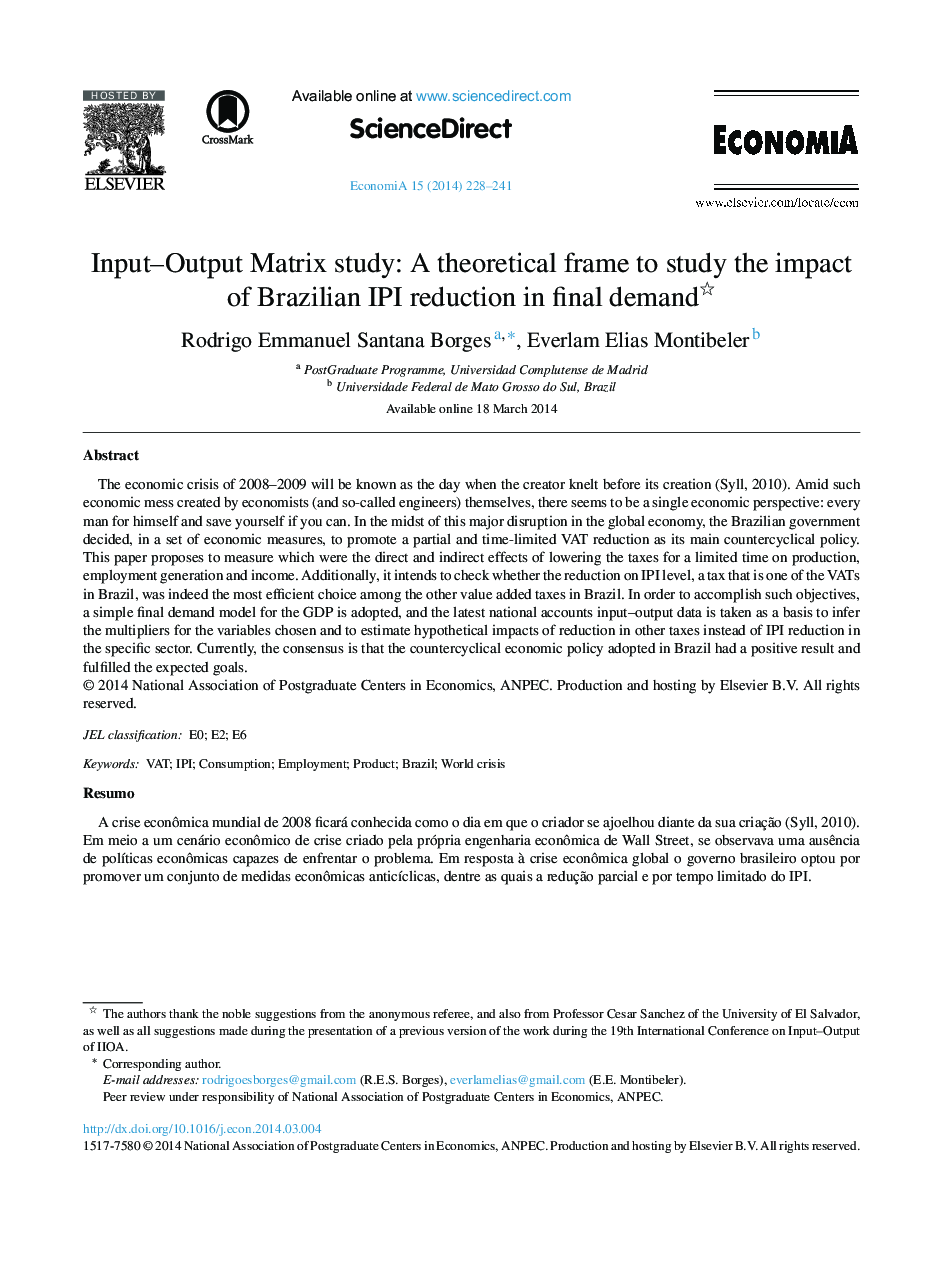| کد مقاله | کد نشریه | سال انتشار | مقاله انگلیسی | نسخه تمام متن |
|---|---|---|---|---|
| 995073 | 936165 | 2014 | 14 صفحه PDF | دانلود رایگان |

The economic crisis of 2008–2009 will be known as the day when the creator knelt before its creation (Syll, 2010). Amid such economic mess created by economists (and so-called engineers) themselves, there seems to be a single economic perspective: every man for himself and save yourself if you can. In the midst of this major disruption in the global economy, the Brazilian government decided, in a set of economic measures, to promote a partial and time-limited VAT reduction as its main countercyclical policy. This paper proposes to measure which were the direct and indirect effects of lowering the taxes for a limited time on production, employment generation and income. Additionally, it intends to check whether the reduction on IPI level, a tax that is one of the VATs in Brazil, was indeed the most efficient choice among the other value added taxes in Brazil. In order to accomplish such objectives, a simple final demand model for the GDP is adopted, and the latest national accounts input–output data is taken as a basis to infer the multipliers for the variables chosen and to estimate hypothetical impacts of reduction in other taxes instead of IPI reduction in the specific sector. Currently, the consensus is that the countercyclical economic policy adopted in Brazil had a positive result and fulfilled the expected goals.
ResumoA crise econômica mundial de 2008 ficará conhecida como o dia em que o criador se ajoelhou diante da sua criação (Syll, 2010). Em meio a um cenário econômico de crise criado pela própria engenharia econômica de Wall Street, se observava uma ausência de políticas econômicas capazes de enfrentar o problema. Em resposta à crise econômica global o governo brasileiro optou por promover um conjunto de medidas econômicas anticíclicas, dentre as quais a redução parcial e por tempo limitado do IPI.Este artigo propõe fazer uma estimação dos efeitos, diretos e indiretos, da redução do imposto sobre produtos industrializados (IPI) sobre a produção, a geração de emprego e renda. Ele também pretende verificar se a redução do IPI – um de nossos impostos na forma de imposto sobre o valor agregado (IVA) – foi a mais adequada para atingir os objetivos da política anticíclica.A fim de cumprir esses objetivos, foi elaborado um modelo simples de estimação da demanda final a partir do PIB e dos dados da última matriz insumo-produto estimada para inferir os hipotéticos impactos da redução do IPI sobre alguns setores da economia.Atualmente, é consenso que a política econômica anticíclica adotada pelo Brasil alcançou um resultado positivo e cumpriu com os objetivos esperados.
Journal: EconomiA - Volume 15, Issue 2, May–August 2014, Pages 228–241